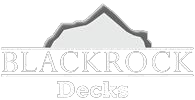Learning to winterize a deck or patio is crucial for both the safety of your outdoor space and its longevity. Winterizing decks and patios might seem like a time-consuming process, but it takes only a few simple steps to ensure that your outdoor space is properly prepared and protected against the elements. In this blog post, we’ll show you everything you need to know about winterizing your deck or patio so it stays intact throughout the harsh conditions of winter and still looks gorgeous come spring.
How to Winterize Patio Furniture
To prep your outdoor space for winter, you must first winterize any patio furniture, umbrellas, etc. before moving on to winterize your deck or patio. Start by thoroughly cleaning your furniture with a power washer if you don’t have one, a simple hose, and soap will work to remove any dirt and debris. Once clean, make sure the furniture is completely dry before moving on. If you have wooden furniture, now would be a good time to add an extra layer of paint or sealant to keep it protected from water damage over the winter. After the furniture has completely dried, stack chairs and other similar items together if possible, cover with a tarp, and secure. Next, move the covered furniture to a storage shed or garage. If don’t have a secure storage area, simply covering deck and patio furniture with a tarp can provide much-needed protection against the wind, rain, and snow.
How to Protect Decking in Winter
Once you’ve taken care of your outdoor furniture, it’s time to focus on winterizing your deck or patio. Start by thoroughly cleaning and power washing the area to eliminate any accumulated dirt or debris. Thanks to Blackrock Decks’ use of top-quality materials for building decks and patios in Utah, there’s no need to worry about repainting or staining the surface for winter; a good cleaning will suffice.
For those wondering how to make Trex decking less slippery in winter, we suggest using a broom to clear away light snowfall. In the case of heavy storms, carefully use a snow shovel to remove snow and ice, but be cautious—metal shovels can harm composite decking. Trex recommends shoveling in the same direction as the decking boards to minimize accidental damage. Trex recommends applying rock salt or calcium chloride to prevent slips on icy surfaces, though it’s important to rinse it off promptly. For more insights on Trex decking winter care, including effective snow removal tips, check out this article provided by the manufacturer.
Can I Use Deck Covers for Winter?
You can use deck covers for winter to protect your outdoor space from potential damage caused by harsh weather conditions, though it’s not necessary. Using a tarp is an effective way to shield your deck from snow, ice, and debris. For those looking to take it a step further, we recommend building a patio cover or a custom roof over your deck.
Custom patio covers or custom roofs not only work as winter deck covers, but they are just as useful at protecting against UV rays and heat in the summer. A custom roof or patio cover from Blackrock Decks can elevate the appearance of your deck and ensure its durability for years to come. Feel free to contact us for more information on our beautiful and functional design solutions.
How To Winterize A Covered Deck
Winterizing a covered deck is a straightforward process, quite similar to winterizing a non-covered deck. Begin by thoroughly cleaning the deck surface, including sweeping away any debris and giving it a good wash to remove any lingering dirt. The primary advantage of having a covered deck is that you typically don’t have to worry about snow or ice removal, as these winter deck covers effectively shield the area from these elements, keeping it clean and dry. This not only saves you time and effort but also helps preserve the integrity of your deck for years to come.
Should I Stain My Deck In The Fall or Spring?
With Trex decking installed by Blackrock Decks, you’ll never have to worry about sealing or staining your deck to prepare for winter. It’s generally not recommended to apply ANY kind of sealant or stain to Trex composite decking, at any point during the year. If you have a traditional wooden deck, not made of composite material, it’s generally a good idea to reseal or restain the wood every fall. This helps prevent damage throughout the winter and keeps your deck looking its best in the spring.
Contact Blackrock Decks for Custom Decks in Utah
If you need help to winterize your deck or want to begin building a new one during the winter, contact the Blackrock Decks team. With a combined 40+ years of experience and knowledge, no project is too big or small for our team of Trex Pro Certified professionals. Our team is dedicated to creating beautiful custom decks in Utah that will last you for years to come. Don’t delay your outdoor project—contact our team for a quote on custom decks, patios, roofs, and pergolas in Utah.





